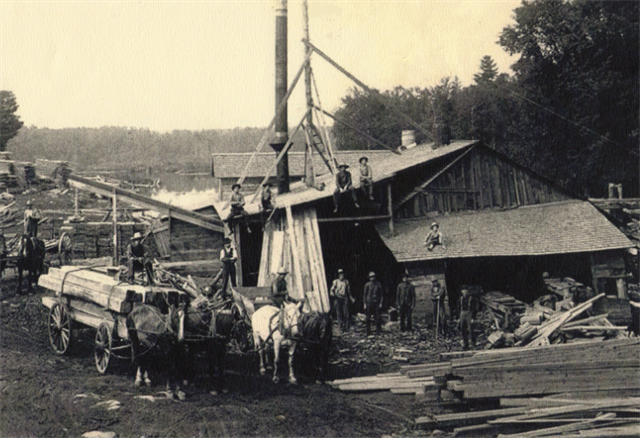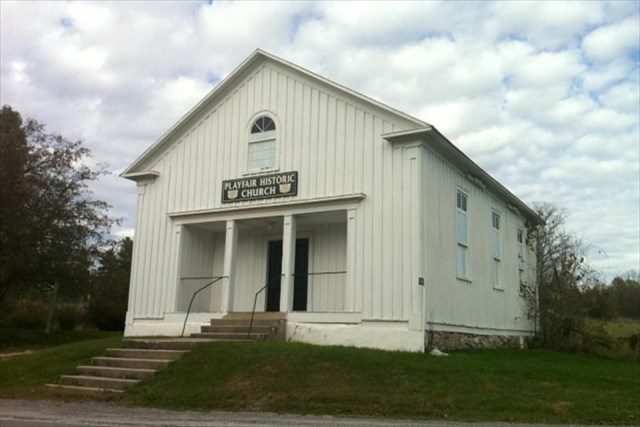This is a series dedicated to our love of history and the wonderful hobby of geocaching; once we saw that other cachers were enjoying our history-oriented caches, this series was the logical next step! Each cache in this series will tell you about a piece of Lanark Highlands history, including stories of the people and events which shaped this region. Once you have read about the history of the location, you will be able to feel the past around you as you explore the site and search for the cahce itself.
The caches range in difficulty and terrain, but they should all be quick finds. They are all in quite rural/treed locations where GPS accuracy is often questionable, but none are difficult hides and we have provided helpful hints it you need them. They are all traditional caches, except where ideal locations are inappropriate for a cache, in which case simple redirects are used. For each cache page, though we have written the story, much of the information and many of the photos are courtesy of the Lanark and District Museum; please do not reproduce the story or photos without consent from the author (Matt Stafford) or the Museum. We hope you have fun learning something new and interesting about each location you visit in the Lanark Highlands; happy caching!
Playfairville
The unassuming little village of Playfairville, existing today only as a small collection of homes and a church, is easy to miss or to pass through without thought of what once existed here. In fact, Playfairville has a long and very interesting history with worldwide connections and links to people such as mathematicians and politicians and to events including the French Revolution and the War of 1812. A rich history exists where this cache is hidden!
 Common among the villages of the time, Playfairville's beginnings and history can be linked to a single founder, in this case Lieutenant-Colonel Andrew William Playfair, pictured to the left. Playfair was born in 1790 in Paris, France during a time of political upheaval in the early months of the French Revolution. He was the son of Mary Morris and the famous William Playfair, participant in the storming of Paris' Bastille prison in 1789 (an event which sparked the Revolution) and important political economist credited with the invention of the pie, line, and bar graphs. The family left France for England shortly before the 'Terror' of 1793, but Andrew's connections to history would not end here.
Common among the villages of the time, Playfairville's beginnings and history can be linked to a single founder, in this case Lieutenant-Colonel Andrew William Playfair, pictured to the left. Playfair was born in 1790 in Paris, France during a time of political upheaval in the early months of the French Revolution. He was the son of Mary Morris and the famous William Playfair, participant in the storming of Paris' Bastille prison in 1789 (an event which sparked the Revolution) and important political economist credited with the invention of the pie, line, and bar graphs. The family left France for England shortly before the 'Terror' of 1793, but Andrew's connections to history would not end here.
When the War of 1812 broke out in North America, Andrew left England for active service in Canada, where he would gain a measure of historical fame in his own right, participating in a number of key events and battles. He is well-known today for having participated in and written about the epic 1176 kilometer military march with his regiment (the 104th New Brunswick Regiment of Foot) from Fredericton to Kingston in the winter of 1813, and for his involvement in the Battles of Sackett's Harbour and Beaver Dams (where the British were warned by Laura Secord of an impending American surprise attack).
After his military service, Lieutenant-Colonel Playfair was granted 600 acres of land along the Mississippi River north of Perth, where he would build a home and begin to found the village of Playfairville (originally Playfair's Mills). Surrounded by massive stands of timber, Playfair realised the area's potential and decided to build a lumber mill alongside the river.

After building his dam and lumber mill, he continued to develop the area through his enterprising construction of a grist mill, a carding mill for wool, and an iron ore mine. This brought many new families to the village, which grew to include a number of houses, stores, and even a hotel and stable. Many of the village's buildings stood along both sides of the road where this cache is located, and some houses and the hotel stood on the hillside across the river.
Well-known and respected in the area, Lt. Col. Playfair later served as colonel of the local militia and was elected to the Legislative Assembly of the Province of Canada for the riding of South Lanark in 1857. Here he served alongside a number of historical figures, including Canada's future first Prime Minister Sir John A. MacDonald and William Lyon MacKenzie, who had previously led the 1837 Upper Canada Rebellion and declared himself the first President of the Republic of Canada. Following his years in politics, Lt. Col. Playfair returned to Playfairville where he continued to live until his death in 1868.
The Playfair mills operated in the family for a number of generations into the future, but were eventually closed as timber and iron ore supplies dwindled. Today, very little remains of the village built here, leaving few hints to the area's past; however, almost unrecognizable remnants of Lt. Col. Playfair's original house and dam can be found. The only buildings built by Playfair and his son 'Big John' remaining in their entirety today are Playfair Manor, built in 1830 on a bend in the river (now privately owned) and the United (formerly Methodist) church built in 1860 and still owned by the Playfair family today.
As you hunt for the cache, remember the bustle of activity that once existed here and the connections this small and largely unknown village has with history through its founder, Lieutenant-Colonel Andrew William Playfair.

Check out the other caches in this series!